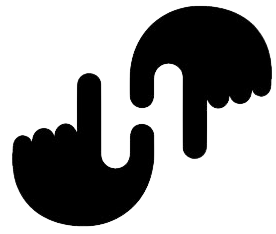How far apart should control joints be in concrete?
Concrete control joints should be no less than ¼ of the total thickness of the slab (1” deep for a 4” thick pour) and placed no less than 2-3 times (in feet) the thickness (in inches) of the slab (8-12 feet apart for a 4” thick pour).
What is a control joint in concrete wall?
WHAT ARE CONTROL JOINTS? Control joints are planned cracks which allow for movements caused by temperature changes and drying shrinkage. In other words, if the concrete does crack-you want to have an active role in deciding where it will crack and that it will crack in a straight line instead of randomly.
What is the maximum spacing of expansion joints?
Maximum spacing of expansion joints range from 25-27 m in jointed reinforced concrete slabs, and from 40 m (for slabs <230 mm thick) to 60 m (for slabs >230 mm thick) in unreinforced concrete.
How often do you need control joints in masonry walls?
A: When no joint reinforcing is used, National Concrete Masonry Association (NCMA) TEK 53, “Design of Concrete Masonry for Crack Control,” recommends spacing control joints in straight wall sections without openings no farther apart than twice the height of the wall, 40 feet maximum.
Should concrete control joints be caulked?
Caulking Concrete Cracks and Expansion Joints Stopping water from flowing under your concrete is probably the most important thing you can do to keep your driveway from sinking and becoming out of level. Even expansion joints in your concrete driveway should be caulked.
Are concrete expansion joints necessary?
Expansion joints are virtually never needed with interior slabs, because the concrete doesn’t expand that much—it never gets that hot. Expansion joints in concrete pavement are also seldom needed, since the contraction joints open enough (from drying shrinkage) to account for temperature expansion.
Does all concrete need expansion joints?
Are joints necessary in concrete road?
Construction of all joints in concrete requires attention to details. Joints are an important part of the pavement and are designed to control cracking and prevent excessive stresses from developing.
Is code for expansion joints in buildings?
3414
As per IS 3414 which is a specific code for joints, it is mentioned as 30m. Expansion joint shall be so provided that the necessary movement occurs with a minimum resistant at joint. The structures adjacent to joint should be preferably supported on separate columns.
What is the maximum spacing Elsewhere control joints in masonry walls?
The normal “rule of thumb” is to place either one joint at the corner or to place two joints spaced no more than 20 to 25 ft. (6 – 8m) apart around the corner. For example, the distance on one corner wall from the control joint to the corner may be 8 ft.
Do brick walls need expansion joints?
The joints are formed by leaving a continuous unobstructed opening through the brick wythe that may be filled with a highly compressible material. This allows the joints to partially close as the brickwork expands. Expansion joints must be located so that the structural integrity of the brickwork is not compromised.
Is it OK to fill expansion joints in concrete?
Once the joint is cut into place, the joint itself is ready to do its job. The joint can then be left as is, sealed, or filled. Sealing or filling should be put off as long as possible to allow the joint to widen, although in practice joints are usually sealed or filled sooner than ideal.
When to cut control joints in concrete slab?
Control Joints are not intended to stop cracking but rather control cracking. It is best to cut joints as early as possible either while finishing with a concrete groover or within 6-18 hours after finishing with a concrete saw. Plan out your control joint spacing 24-36 times the depth of your concrete slab.
What is a concrete wall control joint?
Control joints are a type of engineering device used to limit damage caused by the natural shifts and movements of a building over time. These joints are used in masonry, concrete, and drywall structures to minimize aesthetic and structural damage due to cracking.
What is a concrete crack control joint?
A control joint is a gap, usually formed in a straight line, placed at intervals to control where and how cracks will occur in poured concrete. When you see a “crack” or joint that is formed in a straight line, dividing poured concrete into sections, most likely it’s a control joint.
What is spacing for control joints for retaining wall?
The joint between the base and the wall is continuous, and extending along the length of the wall and the base. Distance between joints in a retaining wall. Vertical construction joints are no standards for retaining walls unless discharges are required separately. Contraction joints or control are placed vertically at regular intervals to control cracking of the expansion and contraction of soil movement. Generally, the spacing of the control joint is specified for a minimum of 20 feet (609
